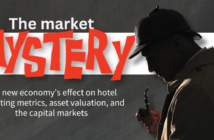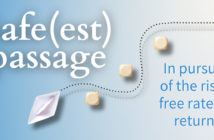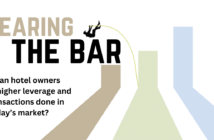Impact your business by exploring different ways to drive top-line revenue.
By Azim Saju
I recently attended the International Franchise Association’s annual convention, which included a panel discussion on what franchisors can do to help struggling franchisees. All panelists – other than moderator Ralph Theirgart of Choice Hotels – came from backgrounds outside of the hotel industry.
The one piece of advice I heard from each franchisor was to explore different ways to drive top-line revenue. I believe this is very applicable in the hotel business. Therefore, I want to share a few helpful strategies in growing top-line revenue and explain why these strategies will be so impactful to your business.
Focusing on special events
The opportunities I see with revenue management mostly center on special events. These are days when you know your hotel will sell out. On such days, there is no need to offer inventory on deeply discounted distribution channels – you are going to sell out anyway. I also believe that on such dates, hotel owners must be sure to shut off any “leaky spigots.” In other words, make sure you minimize out-of-order rooms, resolve due-out rooms, authorize credit cards and inspect all rooms. These simple steps will ensure you actualize a sell-out.
On special event dates, you should be prepared to adjust your rates as demand increases so you are not “setting and forgetting” rates. If you have an opportunity to further increase your BAR (available rate, best rate guaranteed) during the special event day itself, do so. This incremental revenue will go directly to your bottom line.
Look 90 days in advance
At least 90 days in advance of your special event, look at your booking pace – and specifically your arrival list – to see the rates at which your guests are booking. This will provide you insight on the rate plans you have open and the efficiency of your BAR (i.e., the number of your arrivals that are booking at BAR). If all of your arrivals have booked at BAR, this might be an indication that your BAR is too low, depending on how your occupancy is pacing. Alternatively, if most of your arrivals have booked on discounted rate channels, this might indicate one of two things: Your BAR is too high, or you have too many discounted distribution channels open.
Looking at your hotel’s valuation
Outside of special events, consider additional best practices on rate management (see page 76).
The “why” behind these strategies starts with your hotel’s valuation. When valuing your hotel, many industry experts will apply a revenue multiplier to your hotel. The revenue multiplier is solely based on your hotel’s top-line revenues, which are directly correlated with revenue management.
Second, and just as importantly, your hotel’s valuation is determined by a capitalization rate based on your EBIDTA. Any incremental rate that you can drive will go directly to your bottom line and will have a multiplier effect based on the capitalization rate on your hotel’s value.
Third, incremental revenues will provide you with the necessary capital to maintain and improve your hotel and invest in your team. We all know that a strong product and team are essential ingredients for a successful property. ■
Azim F. Saju is a principal with Hotel Development & Management Group, LLC (HDG). HDG has 13 hotels throughout four different brands in its portfolio. He is also chairperson of the Choice Hotels Owners’ Council.
Best practices in rate management
- Review rates and inventory at least 90 days out.
- Set rates 12 months out. For example, when January 2017 is complete and the month is fresh in your mind, set rates for January 2018.
- Unless you have your own revenue management technology and tools, consider that each brand has great revenue management tools, often in a pay-for-play format.
- Make an effort to consistently review your competitive set’s pricing. Brand tools usually include a market shop for you to review your competitive set’s pricing. This market shop is useful, as well as some of the other reports provided.
- Review your weekly and monthly STR to see how you are trending in occupancy, the ADR index and the RevPAR index compared to your comp set. In particular, review your index gains and losses versus that of your comp set. This will serve as an indicator of the efficiency of your pricing strategy.
- Effectively manage groups in terms of payments, group block cut-off dates and rooming lists.




